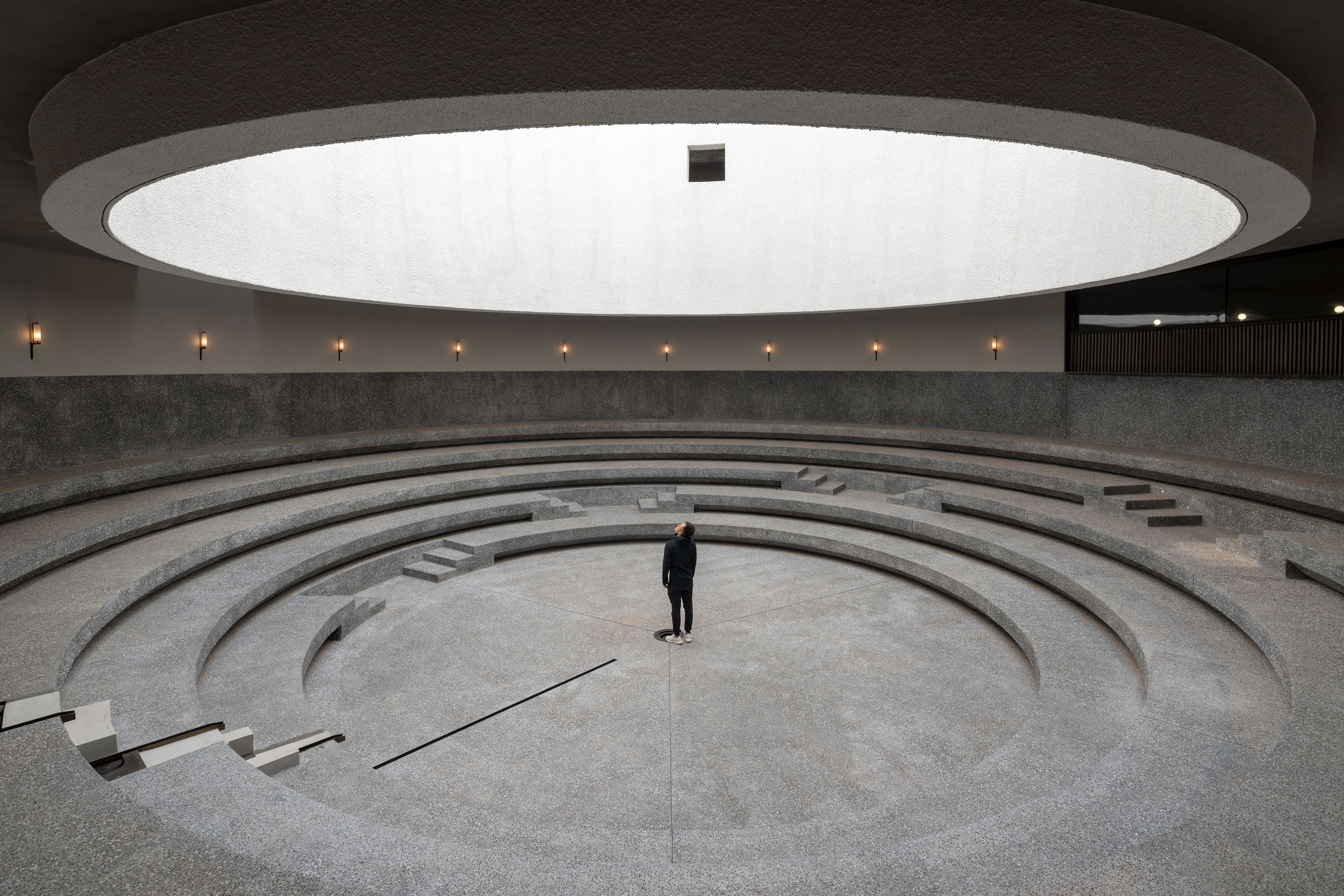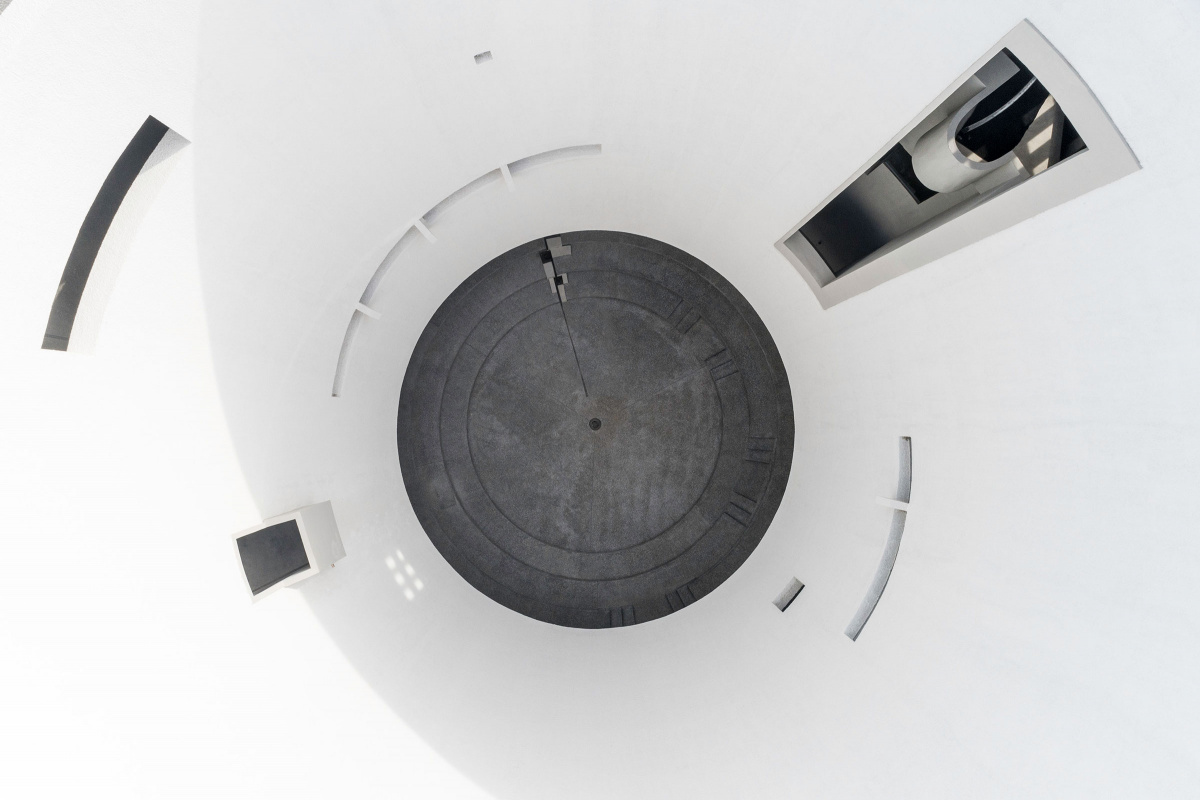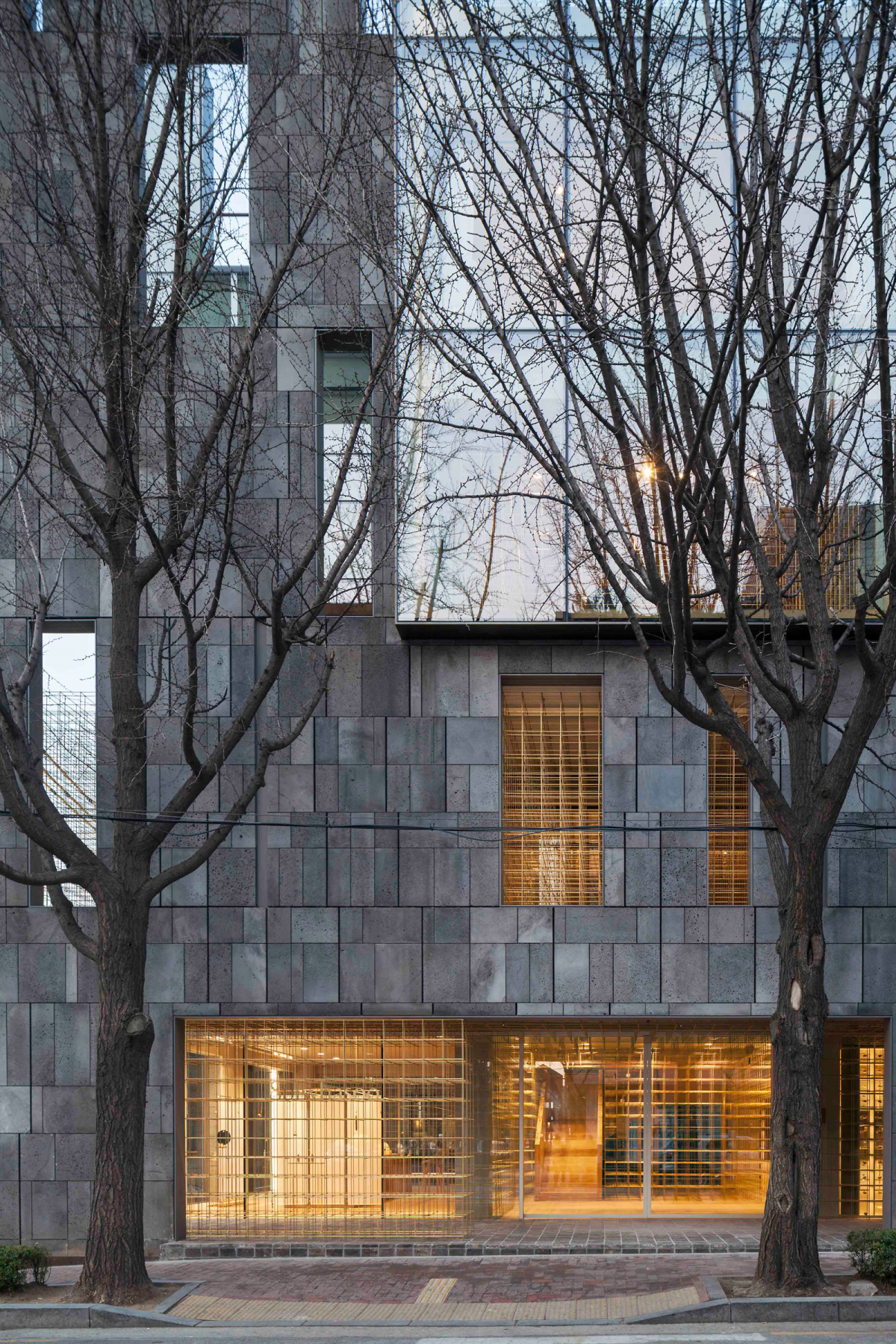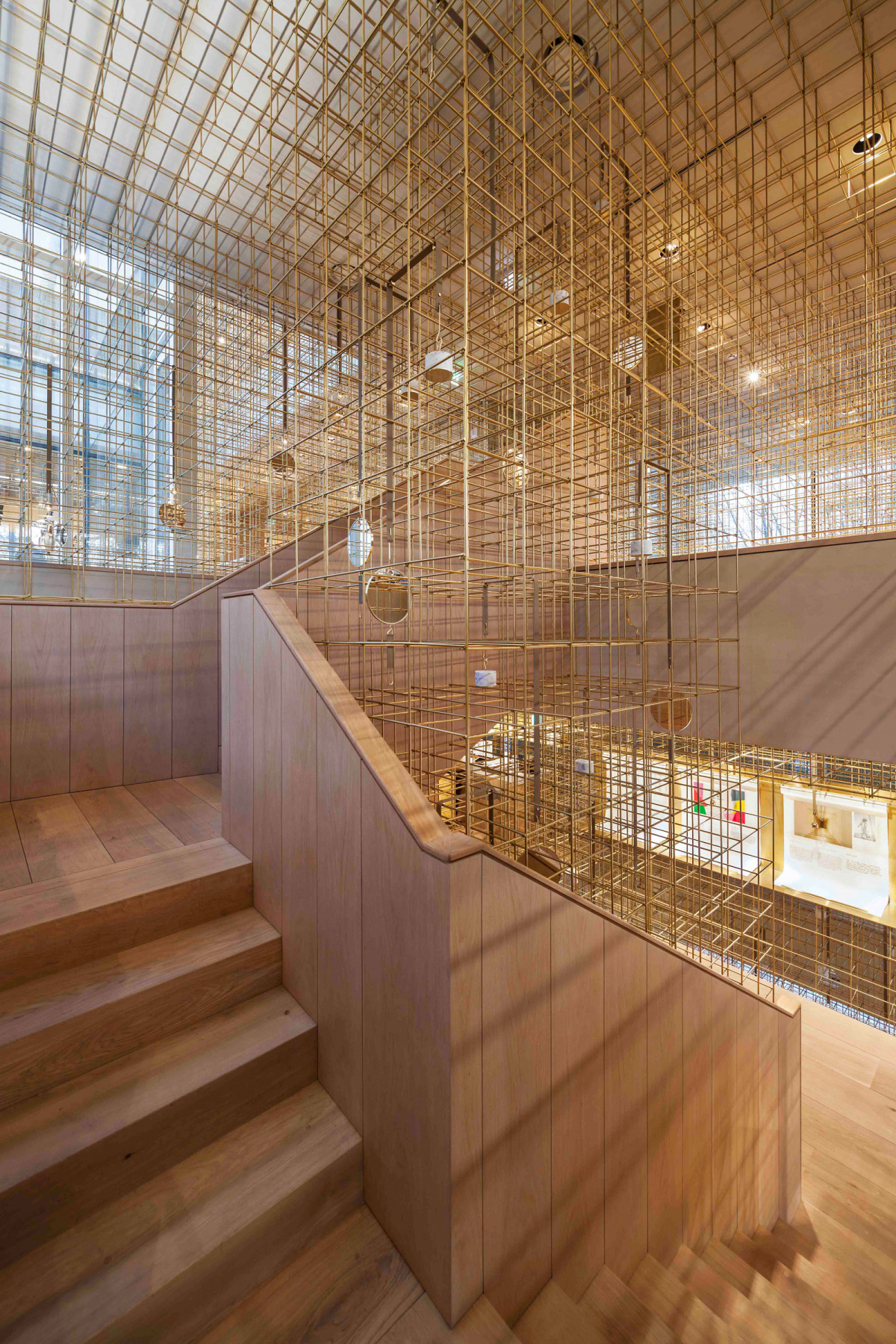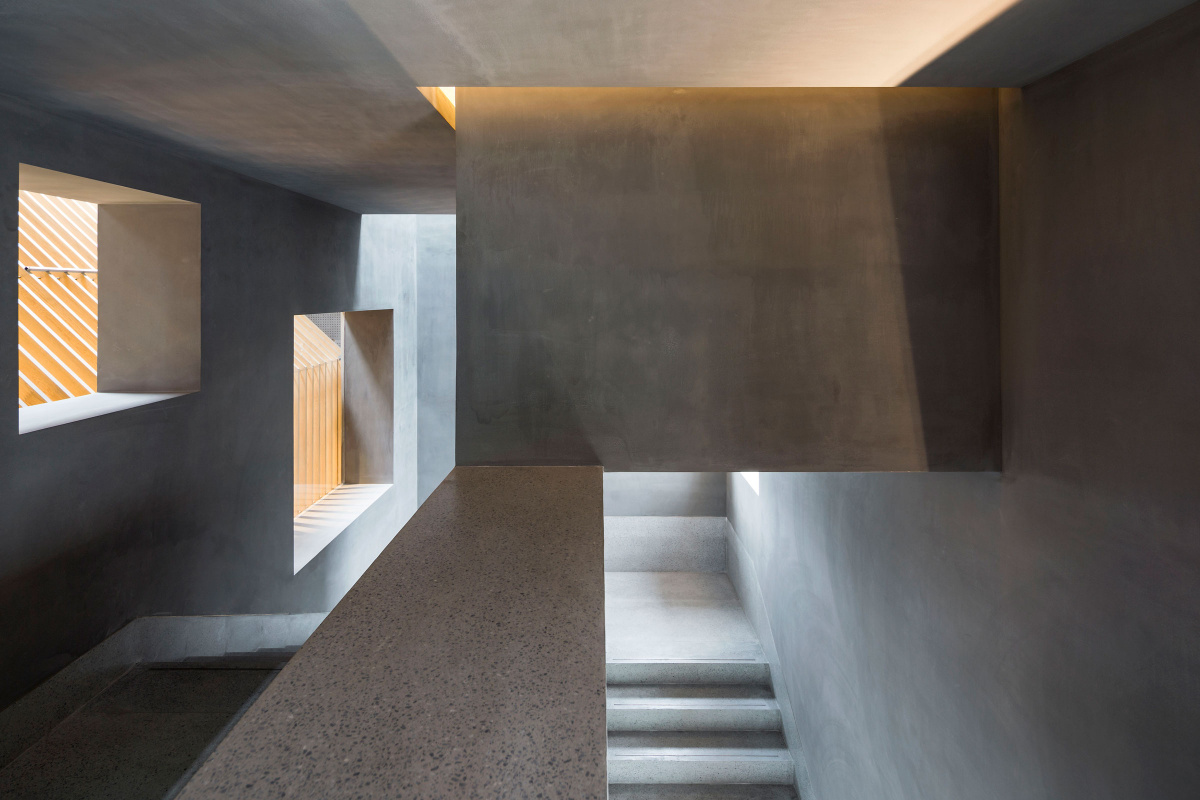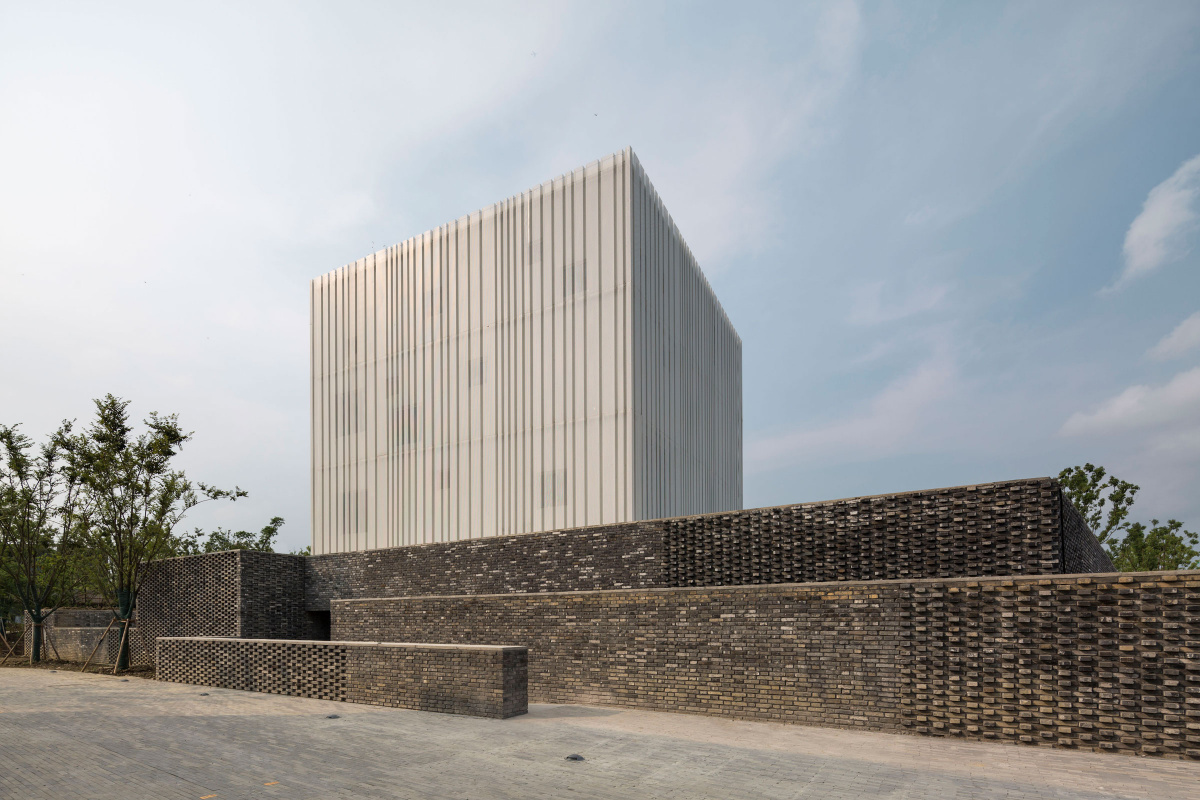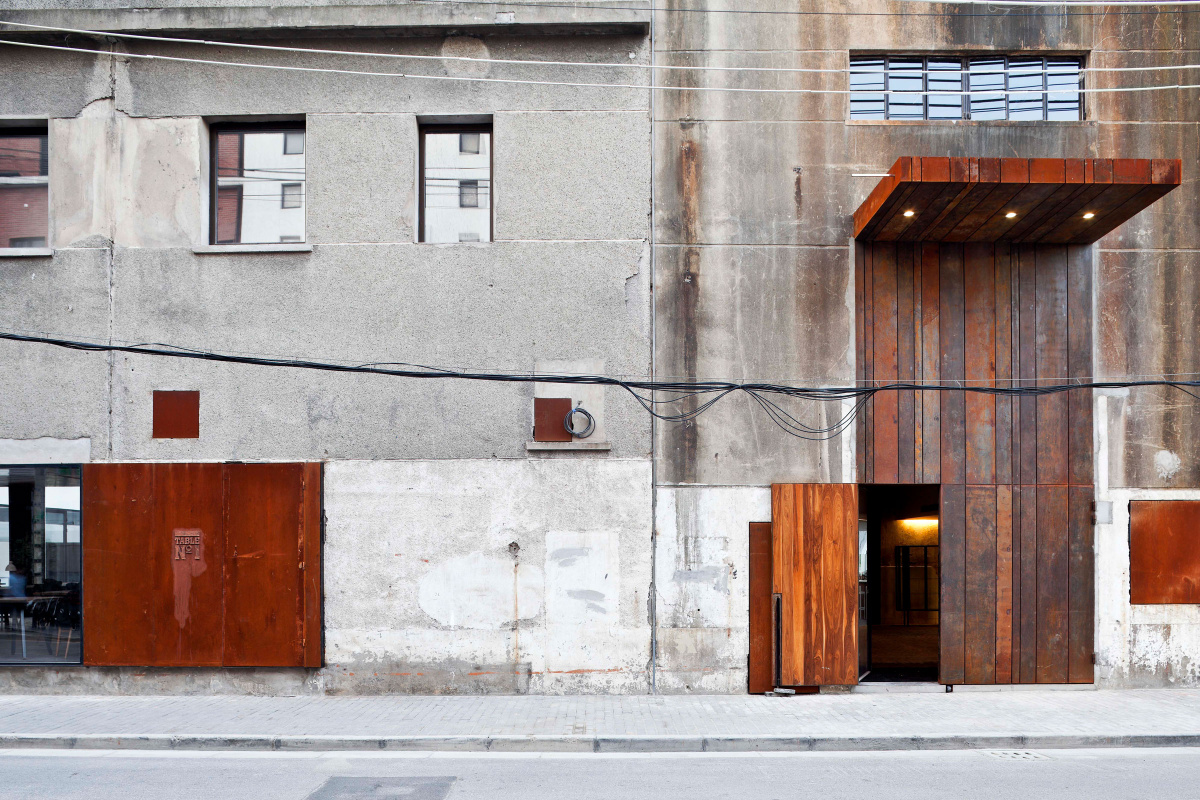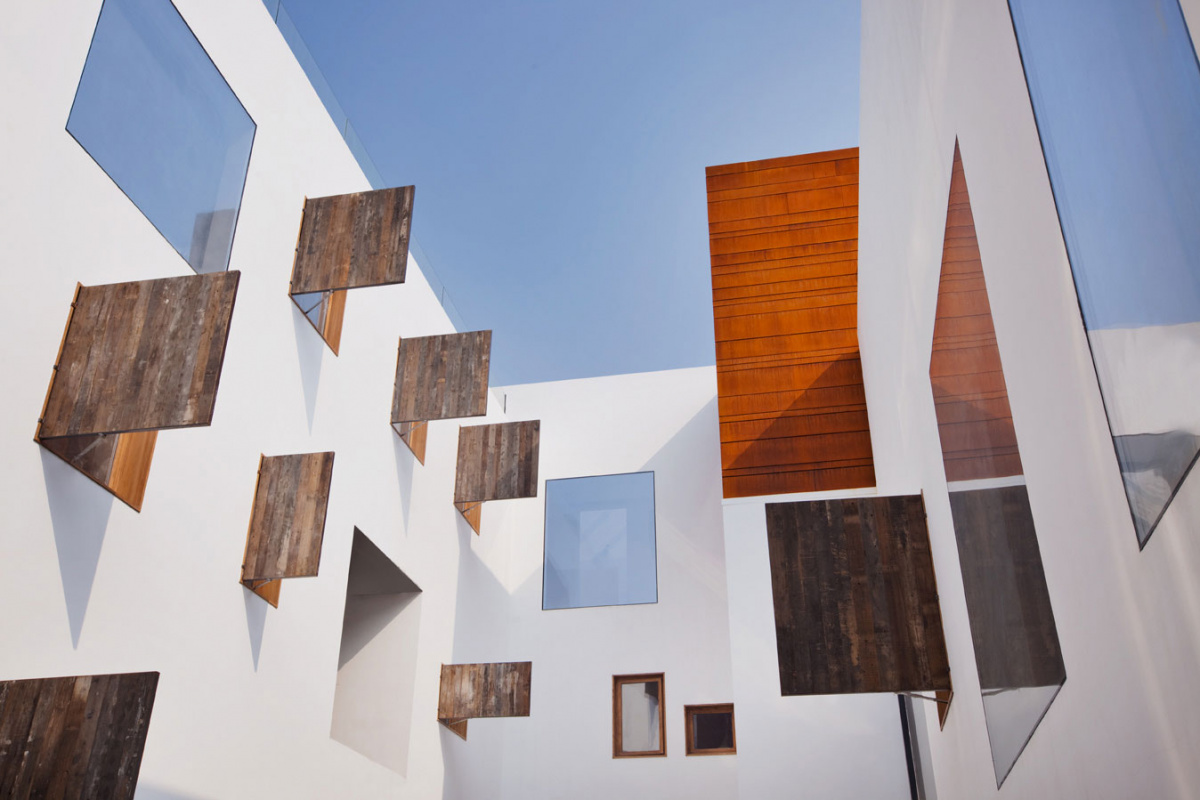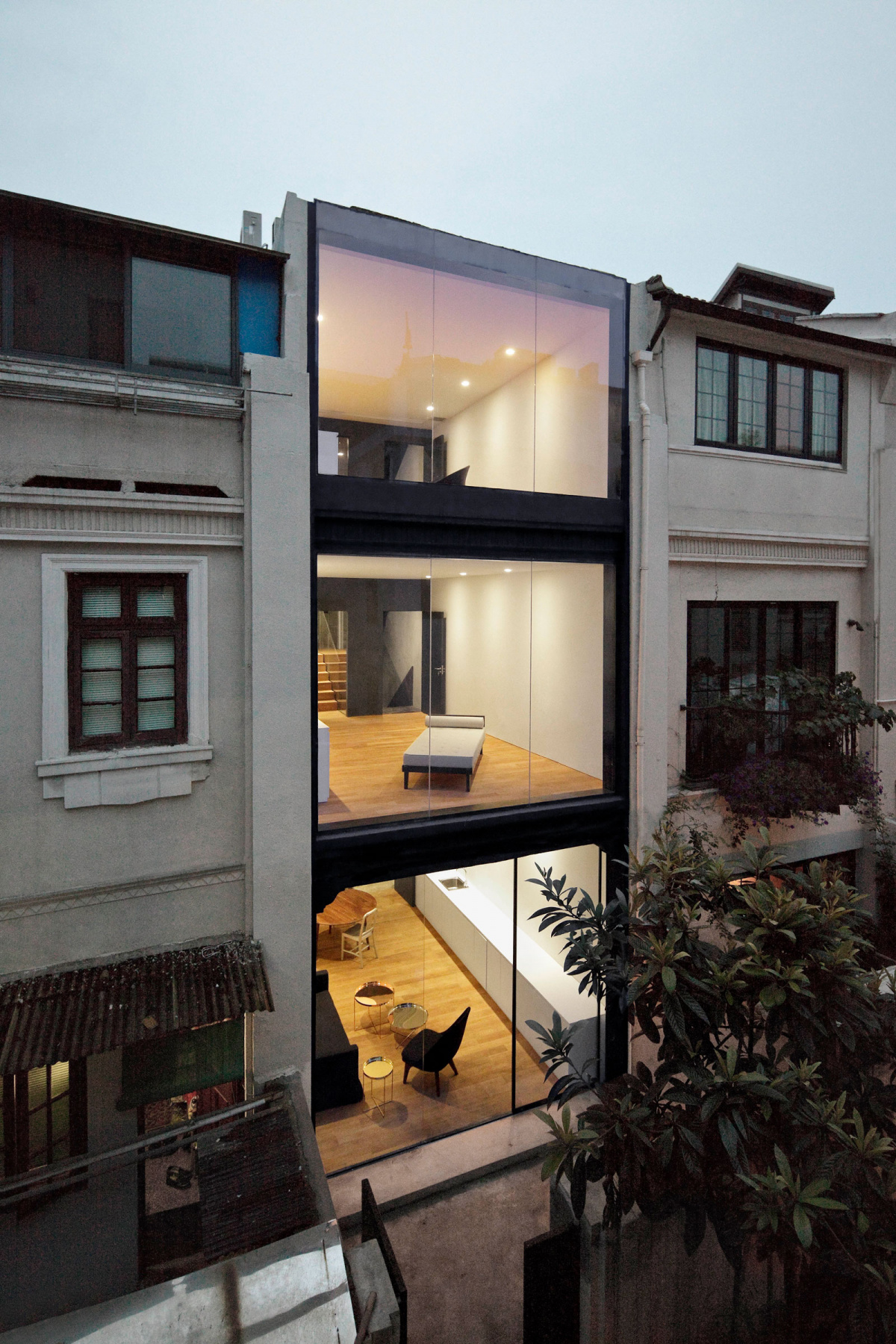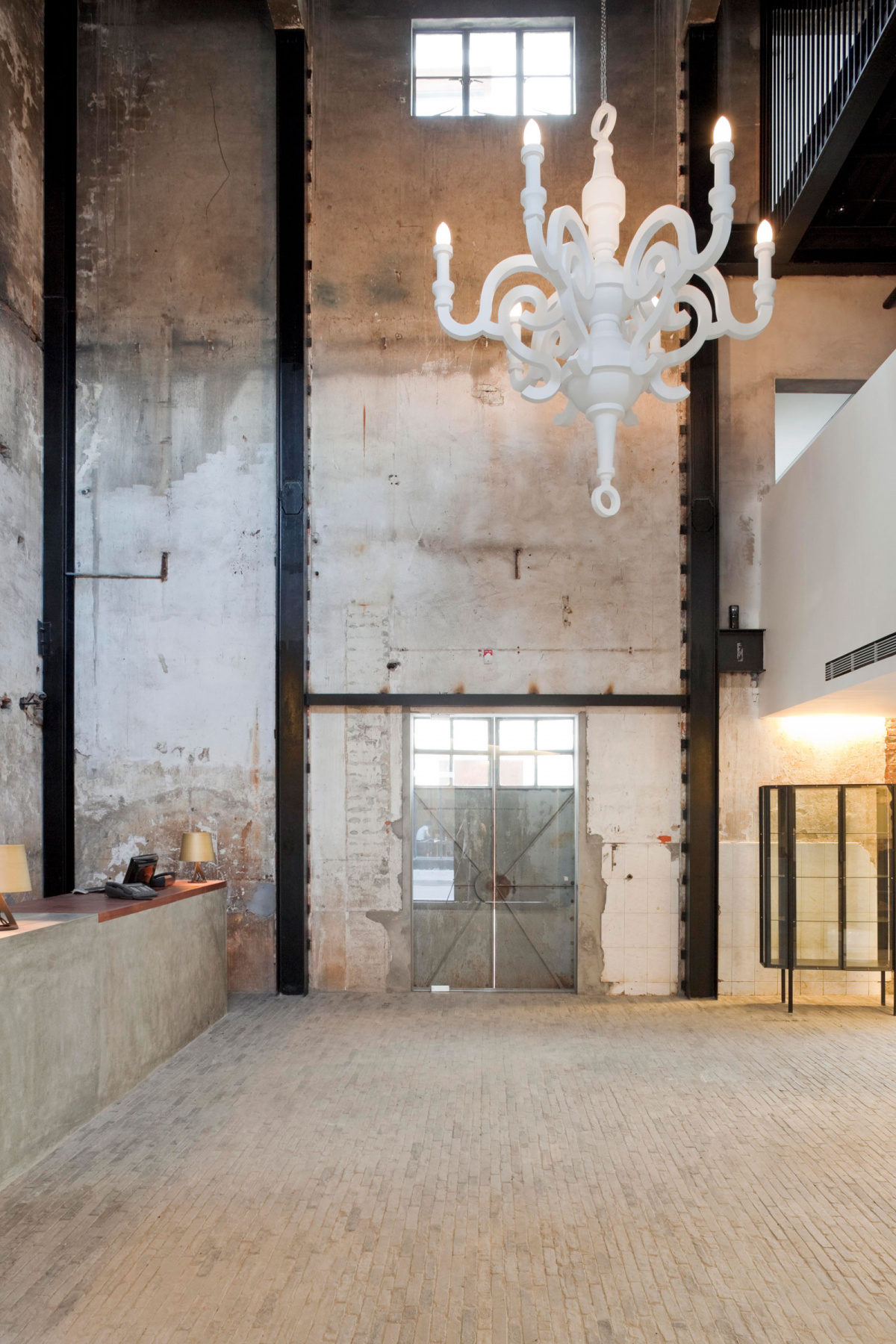“There’s nothing usual about a usual day,” Rossana Hu tells me. I’ve asked her to run me through her routine, but from what I can gather, the only typical thing about a day for the cofounders of Neri&Hu Design and Research Office is there’s barely a moment to catch your breath.
When I arrive at the architects’ Shanghai studio in the afternoon, Lyndon Neri is in the midst of his third design meeting of the day—a new concept from a heritage Chinese cookie brand. In the morning he interviewed for an art museum in Asia, which the firm is shortlisted for, and fixed final tweaks on a distillery in Sichuan that’s set to open soon.
Rossana’s to-do list is equally as stacked—a video shoot of their new studio, interviews for an online platform, and a slew of meetings for clients like a New York-based jewelry brand and AD China in Beijing. Oh, and this interview and tour for Sixtysix.
With early morning site visits, client dinners until late into the night, and staff in Europe as well as Shanghai, the days can be very demanding, Rossana says. I feel exhausted just listening to their schedule. But you wouldn’t know how much they’re juggling from chatting with them; the husband and wife team are grounded, reflective, and remarkably relaxed. “I don’t necessarily like to have appointments, meaning I hate having them. Rossana’s very systematic, very consistent, and orderly,” Lyndon tells me.
“I’m more systematic relative to you, but I am not very systematic at all,” Rossana quickly replies.
- The Void – Aranya Art Center’s central void can be used in many ways, from performance space to water feature. Photo courtesy of Neri&Hu
You can tell they enjoy each other’s wit, rigorous intellect, and the challenges they bring to one another—something I imagine is crucial in a life-work partnership of so many years. They first met as teens.
I ask what drew the pair to design in the first place, and the answers make it clear how their demands are also their passions. For Lyndon, he always loved to draw, even if it was done in secret. “Growing up in the Philippines in a Chinese family, being an artist was not a choice. That’s not even a profession you talk about,” he says. So he didn’t, instead lying to his father about his fine arts major at Berkeley and finally switching to architecture when the charade couldn’t be kept up any longer.
Rossana excelled at math and science but wanted to be in a creative field. “I picked architecture not really knowing anything about the profession or what an architect does.” She beams when looking back at her first year of architecture at UC Berkeley. “You just fall in love with it, and that’s the beginning and the end,” she says.
- Neri&Hu radically transformed this existing five-story building in Seoul, making it a grand flagship store for top Asian skincare brand Sulwhasoo. Photo courtesy of Neri&Hu
- The design is inspired by the idea of a lantern. Photo courtesy of Neri&Hu
Neri&Hu’s 26,000-square-foot office is a work of art itself—surprising in a nondescript compound in central Shanghai. The building’s facade is striking; windows are infilled with glass bricks, and glazed deep green tiles run along the lower level wrapping around the staircase on one end.
Inside, the studio hums quietly with an energetic pulse and purpose. Neri&Hu spent two years renovating the former telecoms building, dubbing it The Black Box Redux in homage to their previous place. “We loved that office,” Lyndon says. Also meticulously designed by Neri&Hu, the black box—a nod to a plane’s “black box” and a studio’s “storage” of ideas—in the city’s former French Concession was home for 10 years before the move.
- During the day The Sanctuary – Suzhou Chapel shines in the sunlight, subtly exposing what’s inside. At night, the white box is like a beacon, as its windows emit a soft glow in all directions. Photo courtesy of Neri&Hu
Their new four-story home reflects the duo’s obsessions—adaptive reuse, interiority, the idea of public and private, total design, and reflective nostalgia (coined by Harvard professor Svetlana Boym, who said restorative nostalgia doesn’t think of itself as nostalgia but as truth and tradition). Echoes of the building’s past reverberate through the original concrete posts and beams left exposed. Large windows overlook neighboring residential low-rises, framing mundane scenes of daily life.
Lyndon says the building’s owner approached Neri&Hu knowing the studio would bring the place to life. Furniture brands like Muuto and Stellar Works occupy the ground floor retail spaces alongside an artisan bakery and art gallery. The second floor houses a sleek coworking space, a small showroom area with Neri&Hu furniture, and the offices of Design Republic—a platform for design brands started by Lyndon and Rossana. A large Candida Höfer print sits at the entrance, one of many pieces from the couple’s personal art collection seen throughout the building. Neri&Hu’s offices spread across the third and fourth floors.
- Undulating brick walls and a floating white volume are key elements of The Sanctuary – Suzhou Chapel. Photo courtesy of Neri&Hu
Lyndon and Rossana describe their interdisciplinary practice much like a school studio. It starts with conversation, discussion, and brainstorming, underpinned by a strong unwavering pedagogy. “Lyndon and I float from team to team,” Rossana says. “Especially with Lyndon, he never really sets a meeting schedule. He’ll turn up at someone’s desk and say, ‘Let’s talk about this now.’ It catches people off-guard, but it keeps people on their toes.”
The founders are hands-on, to say the least. “We’re very controlling, and that’s why it’s chaotic and bottlenecks,” Lyndon says. “We know the project exactly because we start the conceptual framework. Some people start to deviate a little bit too far, and we have to push back.”
- This four-story boutique hotel in Shanghai was built into an existing three-story Japanese Army headquarters building from the 1930s. Photo courtesy of Neri&Hu
As senior designers grow fluent in the Neri&Hu design language and learn how to work within its grammar they gain more autonomy. “Obviously there’s no way we can do this kind of creative control in such detail for every project,” Rossana says. “There are projects that have more freedom, and then there are ones that have less.”
Throughout our conversation the concept of pedagogy and obsession recurs. A laser-focused vision drives them, but it made things tricky at the beginning. After years with Michael Graves & Associates, the husband-wife team founded their own Shanghai-based firm in 2006. “The first four, five years were difficult,” Lyndon says. Hiring was hard. “We were trying to convince people of a vision we wanted to create, but they hadn’t physically seen our projects or heard us lecture.”
The pair had lofty ideals but no projects or budget. “We’re trying to do adaptive reuse. We’re trying to deal with reflective nostalgia—very abstract constraints—and we’re saying, ‘We can only pay you $300.’”
- The hotel’s original concrete building has been restored while new additions built over the existing structure were made using Cor-Ten steel, reflecting the industrial past of this working dock by the Huangpu River. Photo courtesy of Neri&Hu
More than a decade and many projects later, Neri&Hu have no problem attracting talent. Since works like The Waterhouse at South Bund (a boutique hotel in a 1930s Japanese Army headquarters) and The Split House (a reconstruction of a traditional Shanghai lane house), their projects have reeled in global awards. In 2013 Lyndon and Rossana were inducted into the US Interior Design Hall of Fame. They’ve worked with big names like Ian Schrager on the Shanghai outpost of the EDITION hotel brand. They also designed the Pernod Ricard Malt Whisky Distillery, China’s first malt whisky distillery. It’s set to open in 2021 as part of the UNESCO World Heritage Site in Emeishan, Sichuan province.
Today’s 100-person design team is well-versed in Neri&Hu’s modern design language and vision of adaptive reuse. The studio is in high demand, with as many as 500 requests from around the globe each year, of which they take only a dozen. Their second monograph is coming out in summer.
- The Split House in Shanghai emphasizes the physical split between an existing structure and its new addition as well as the conceptual split between the traditional and the modern conditions of living within the urban context of Shanghai. Photo courtesy of Neri&Hu
- Neri&Hu also designed The Waterhouse at South Bund’s interior, blurring interior and exterior and public and private spaces to create a disorienting yet refreshing spatial experience for the hotel guest. Photo courtesy of Neri&Hu
I ask what the future holds. “We’ve been teaching a lot the last few years,” Lyndon tells me. He says it’s part of how they give back. Teaching has become a priority as they watch their three children grow and academia becomes more relevant in their lives. In 2018 Lyndon and Rossana held positions at Yale School of Architecture, in 2019 at the Harvard Graduate School of Design and, before the pandemic they traveled regularly for lectures. “It was pretty brutal,” he says. “But in many ways it also allowed us to understand our obsessions and issues we’re dealing with and strengthened our pedagogy.”
Right now they’ve found themselves at an inflection point and are considering becoming a smaller studio. Being smaller would allow them to be less encumbered by cash flow while staying nimble and creative. They want to pursue more cultural and civic projects, too. “We’re not built corporate,” Lyndon says.
While it’s not decided by any stretch, you sense the freedom of being small is sounding more and more appealing. “It’s like a snowball effect: Because you are large you have to get more projects but because you get more projects, you need more people to work on those projects,” Rossana says. “I mean, if you’re successful.” She pauses. “But is that definition of success what we want in the long run?”
A version of this article originally appeared in Sixtysix Issue 06 with the headline “Designing Chaos.” Subscribe today.
